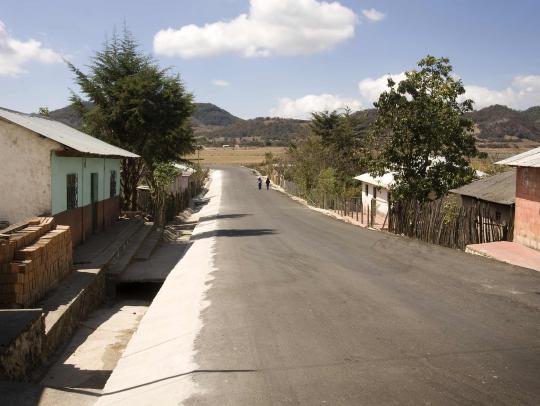Earth observation and space science services: how to clear bottlenecks with satellite-to-satellite links?

By Benoit Rougier, Manager Spectrum Management & Development EMEA, and Ryan Henry, Senior Manager Spectrum Management & Development Americas
Data download is a bottleneck and a design driver for both large-scale space stations, such as the International Space Station, and small-scale satellites, including micro and nano satellites. The payloads that these missions carry on board – such as real time offloading of Earth imaging and Internet of Things (IoT) traffic – often gather more data than can be downloaded during the short time periods when an associated ground station is in sight.
Take for example Copernicus Sentinels, the EU’s fleet of Earth Observation (EO) satellites, which make available over 20,000 gigabytes of new data every day alone. The large quantities of data collected, combined with limited download windows, create a real bottleneck for the important data gathered by these satellites.
But what if we could enable near real-time delivery of data from such satellites, even when they are not within sight of an associated ground station? Near-real time delivery and analysis of such data could, for example, improve early warning of adverse weather events or improve the targeting and response times for disaster relief efforts. Fortunately, there is a quick and cost-efficient way of doing this by using satellites in higher orbits as inter-satellite data relay links to send the data to the ground.
An alternative path to download data to the ground
Using satellites in higher orbits as data relay links offer these space stations, earth observation and small satellite systems in lower orbits an alternative path to download data to the ground, providing options for higher resolution, lower latency and resiliency. Satellite systems can deliver these services via radiofrequency satellite-to-satellite links using existing assets, allowing fast implementation within a well-established satellite and ground segment ecosystem.
Operators of EO satellites now require greater capability to meet customer demand. Earth observation and space science missions already represent a market of nearly 7 billion U.S. dollars and revenues are projected to reach nearly 16 billion U.S. dollars by 2032.
The surge in EO data generation arises from higher resolution instruments being deployed along with a growing set of applications being developed to analyse and consume the data collected. Higher resolution and greater consumer demand necessitates more capacity for these new applications, some of which require lower latency for real-time and near real- time data download.
Scaling up through a regulatory framework
Scaling up to meet these demands will be facilitated by global harmonization of use of existing Fixed Satellite Service (FSS) frequencies for high-capacity on-orbit data relay services. Studies to support such services are nearing conclusion, as part of proposed actions for the upcoming 2023 World Radiocommunication Conference (WRC-23) of the International Telecommunication Union (ITU). WRC-23 is considering adoption of a regulatory framework for satellite-to-satellite links in portions of the Ka-band under Agenda Item 1.17.
This initiative aims to permit Earth observation and other space systems to relay data from satellites in low Earth orbits (LEO) to satellites in higher geostationary (GSO) or non-geostationary (NGSO) orbits to ground systems, increasing the frequency at which ground systems can receive data compared to the capabilities of current, independent satellite systems that must wait until they are within sight of an associated ground station. The Ka-band offers these satellite-to-satellite links the higher throughputs that are required to offload data at the desired frequency and volume for new applications and space missions. All of this can be achieved consistent with the existing operational parameters and frequency coordination arrangements that the FSS operators already have in place.
In preparation for WRC-27, proposals are being considered to broaden the scope of study and deployment to satellite-to-satellite links in the C-band. Creating a harmonized framework for relays in the C-band will complement the regime that is being developed in the Ka-band, and will boost the operational and spectral efficiency of C-band satellite operations through the effective reuse of spectrum for transmissions between space stations.
SES is partnering with geospatial imagery service provider Planet Labs in one such mission for the U.S. National Aeronautics and Space Administration (NASA). NASA is commissioning links in both the Ka-band and the C-band to replace its Tracking and Data Relay Satellite System (TDRSS). TDRSS currently supports communications with the International Space Station, among other functions, and will transition to commercial solutions like the SES-Planet Labs collaboration around the end of this decade under NASA’s larger Communication Service Project (CSP). Well-established resilience, robustness, and global reach makes the combined use of Ka- and C-band systems ideal for the continuous data flow envisioned by the International Space Station, EO providers and other users of lower Earth orbits.
SES is actively addressing these vital requirements through our involvement in the ITU's Agenda Item 1.17 at the upcoming WRC-23. Fostering data relay services by enabling satellite-to-satellite links is important not just to support government requirements (such as the NASA CSP project) but also for commercial systems, like Planet. Governments have an opportunity at WRC-23 to support these activities at scale by promoting the use and study of globally harmonized Ka-band and C-band frequencies as proposed for WRC-23 and WRC-27. SES remains committed to driving advancements that enhance capabilities of Earth observation and other space science missions.




